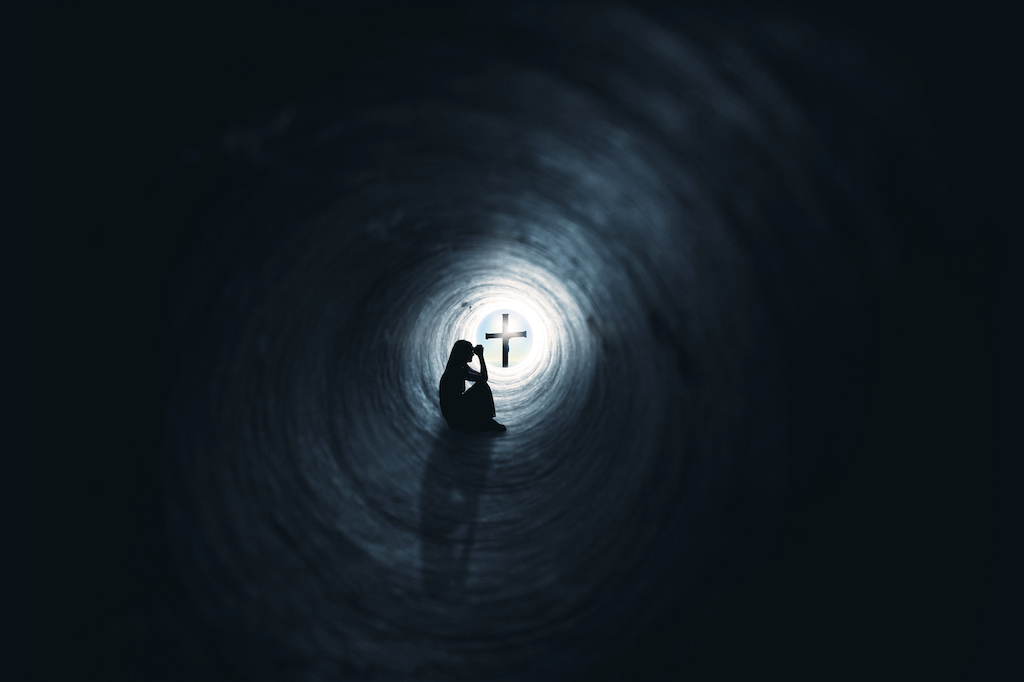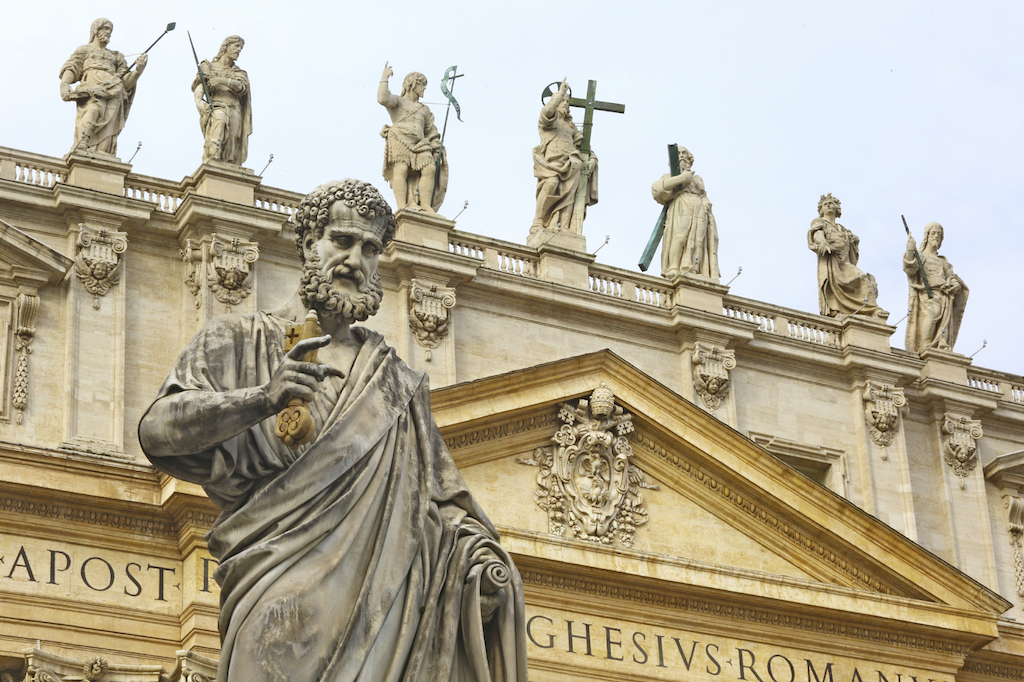Last week, we discussed briefly the states of the Church: military, triumphant and suffering. This week, we will take a closer look at each.
The Catholic Church teaches that each human being has an immortal soul, created in God’s image and likeness. It is our personal responsibility to make sure that our soul is in a state of grace – free from sin. This is not to say that we do not sin, but rather that we seek forgiveness for our sins. Should we harm another person, we must seek their forgiveness. Should we violate God’s commandments and Church teaching, we must seek forgiveness through the Sacrament of Reconciliation.
We all know, however, that sin has lasting effects. When we harm a relationship with a loved one, we know that it takes time, trust and honesty to rebuild that relationship. And so it is with God.
Every immortal soul has but one of two eternal destinations: Heaven or Hell. Yet God, in His infinite mercy and wisdom allows for purification of souls even after death, which we call Purgatory. From the Catechism of the Catholic Church:
1030 All who die in God’s grace and friendship, but still imperfectly purified, are indeed assured of their eternal salvation; but after death they undergo purification, so as to achieve the holiness necessary to enter the joy of heaven.
1031 The Church gives the name Purgatory to this final purification of the elect, which is entirely different from the punishment of the damned. The Church formulated her doctrine of faith on Purgatory especially at the Councils of Florence and Trent. The tradition of the Church, by reference to certain texts of Scripture, speaks of a cleansing fire:
- As for certain lesser faults, we must believe that, before the Final Judgment, there is a purifying fire. He who is truth says that whoever utters blasphemy against the Holy Spirit will be pardoned neither in this age nor in the age to come. From this sentence we understand that certain offenses can be forgiven in this age, but certain others in the age to come.
1032 This teaching is also based on the practice of prayer for the dead, already mentioned in Sacred Scripture: “Therefore [Judas Maccabeus] made atonement for the dead, that they might be delivered from their sin.” From the beginning the Church has honored the memory of the dead and offered prayers in suffrage for them, above all the Eucharistic sacrifice, so that, thus purified, they may attain the beatific vision of God. The Church also commends almsgiving, indulgences, and works of penance undertaken on behalf of the dead:
- Let us help and commemorate them. If Job’s sons were purified by their father’s sacrifice, why would we doubt that our offerings for the dead bring them some consolation? Let us not hesitate to help those who have died and to offer our prayers for them.
This is the Church suffering: souls who know that the glory of God awaits them, but who must first be purified of sin.
Every Sunday, as a Church, we pray in the Creed of our belief of “one, holy, catholic and apostolic Church.” The Church suffering is part of that unified Church. They are not souls relegated to some other place where we have no relationship with them. They are not behind some sort of celestial barrier or imprisoned forever. No, they are our brothers and sisters in Christ, in need of our prayers.
Fr. John Hardon, SJ, was a renowned theologian and speaker. Here are some of his teachings on Purgatory and the souls of the Church suffering:
The Poor Souls are the souls of those people who died in the friendship of God. But they still have some suffering to undergo for the sins they had committed during their lives on earth. It is the infallible teaching of the Catholic Church that there is a purgatory. As the word itself indicates, purgatory is the state of those who still have to be cleansed of the penalty which they owe for their past offenses against God…
It must seem strange to speak of devotion to the Poor Souls. But it is not really strange. Devotion to the Poor Souls has two sides: our side and the side of the souls in purgatory.
On their side, the Poor Souls are united with us in the one Kingdom of Christ. They can pray and obtain blessings for us here on earth. They are united, as the Second Vatican Council teaches, with the pilgrim Church in the Communion of Saints. We are therefore encouraged to invoke their aid, with a confidence of being heard by those who understand our needs. They know from their own experience what it means to carry the cross here on earth.
On our side we are to do everything we can to help the Poor Souls in the Church Suffering. The sufferings in purgatory are not the same for all. They depend on each person’s degree of sinfulness. St. Thomas Aquinas held that the least pain in purgatory is greater than the worst pain in this life. St. Bonaventure held that the worst suffering after death was greater than the worst suffering on earth, but the same could not be said regarding the least pain in purgatory. In general, however, we should say that the pains of purgatory are greater than those on earth.
Remember that devotion to the Poor Souls is really a covenant between them and us. We pray and sacrifice for them, They can pray and suffer for us. They appreciate whatever help we give them, to lessen their suffering and to shorten their stay in Purgatory. They will continue to show their appreciation when we join them in a heavenly eternity. [emphasis added]
Again, the Church is united, our souls in need of each others care and prayers. While the Church suffering may seem harsh, it is the act of a loving God: to allow for the cleansing of preparation of souls before they are able to be in the presence of God. Further, what a terrific act of love by God that we are able to be in community with these souls, and they with us. We pray for each other, we suffer (always in unity with Christ) for each other, we look forward to being in the presence of God together for all eternity. And so we pray:
O gentle Heart of Jesus, ever present in the Blessed Sacrament, ever consumed with burning love for the poor captive souls in Purgatory, have mercy on them.
Be not severe in Your judgments, but let some drops of Your Precious Blood fall upon the devouring flames.
And, Merciful Savior, send Your angels to conduct them to a place of refreshment, light and peace.
Amen.


